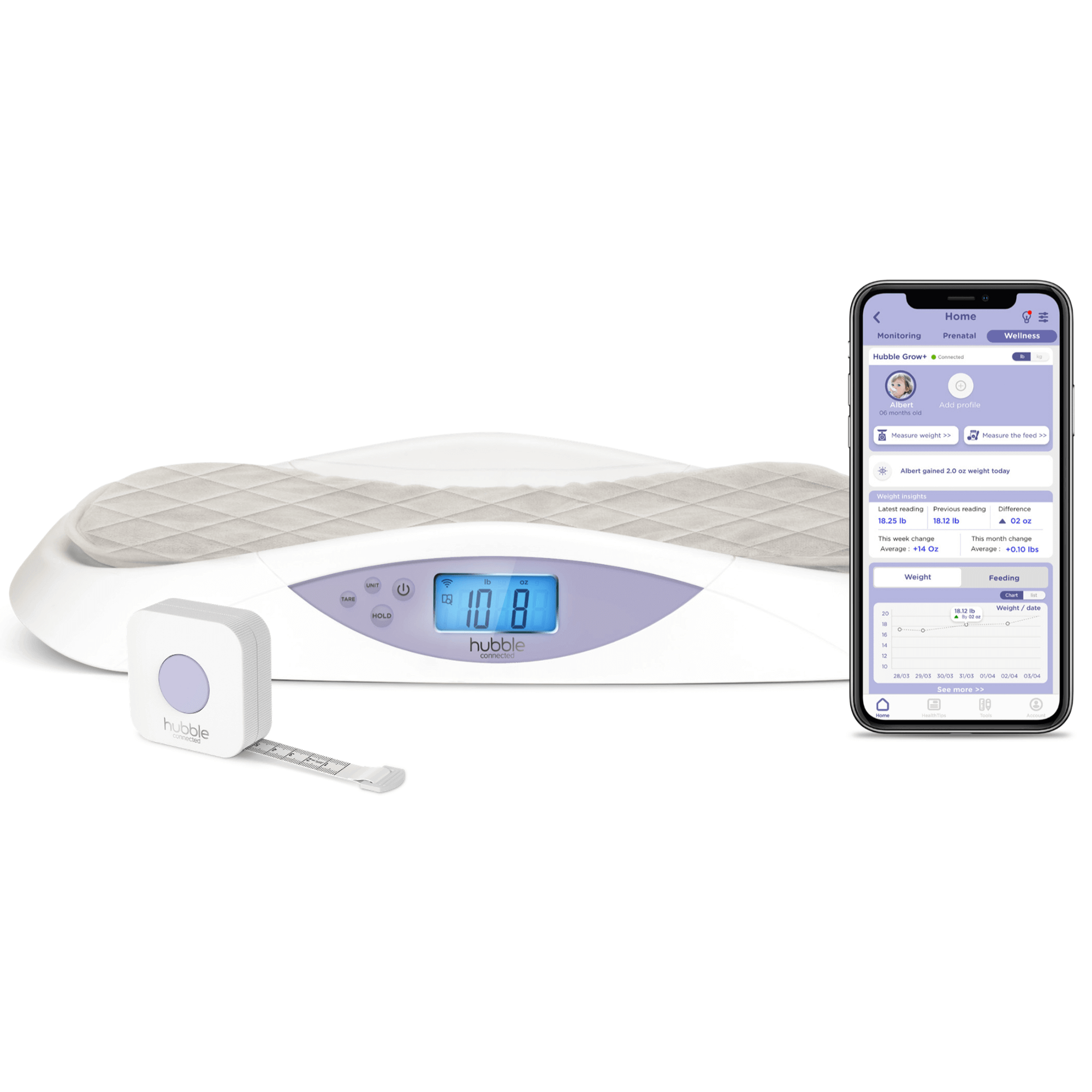Naps are important for your baby’s mental and physical development. Most parents also rely on these short rest periods to take a break from their parental duties.
When your baby wakes up 15 to 20 minutes into their nap, it can be a tad frustrating—especially if you’ve been waiting for them to sleep so you can get some work done. If you’re currently battling this problem, you’re not alone. It’s a common struggle amongst many new parents. Fortunately, there are known remedies to solve baby short naps.
What Are Short Naps for Babies?
Short naps refer to less than 40 minutes of sleep per time. These short sleep sessions are developmentally normal in the first few months of a baby’s life, but as their sleep habits mature around the four- to six-months mark, you should expect your baby to sleep for longer periods.
How Many Naps Does Your Baby Need Per Day?
Babies have varying needs when it comes to sleep. Generally, your baby should take at least two long naps (more than an hour each) per day, in addition to one or two smaller naps around 30 to 40 minutes long. Most babies take two to five naps per day in their first year.
There’s no cause for concern if your baby’s naps come close to the above estimates and recommendations.
However, you need to seek remedies if your child isn’t getting anywhere near enough long naps per day.
Top Tips and Tricks to Solve Baby Short Naps
Below are some practical solutions to increase the length of your baby’s short naps. Some of these tips can also help with getting babies to sleep through the night.
1. Improve Your Baby’s Sleep Environment
Most parents do their best to outfit the baby’s sleep environment with the most comfortable accessories, but comfortable for whom? Those wooly blankets that feel so comfortable to you may be causing itching for your child.
Is the cot foam comfortable for the child’s age? Does the ambient lighting need tweaking? Go over your baby’s sleep environment to pinpoint any factors undermining nap duration.
2. Increase the Length of Soothing Sessions
Babies have a weak biological compulsion to sleep during the day, which is why they struggle to sleep at naptime. You can increase the desire to sleep at naptime by increasing the length of soothing sessions. Babies less than six months old benefit from a combination of:
· Swaddling
· Rocking
· Adding a pacifier
3. Maintain Consistency with the Nap Environment
Your newborn can nap almost anywhere, regardless of the environment. However, they start to desire consistency in their nap environment from three months old. This means you have to make sure you’re trying to get them to nap in the same place most of the time.
4. Take Advantage of Sleepy Cues
As babies age, they give off some cues when they are due for a nap. If you notice signs of tiredness such as yawning, drowsiness, and rubbing the eyes, it’s time for a nap. Follow up immediately by putting the baby in their crib and removing any distractions. You may also consider swaddling and rocking to speed up the process.
5. Control Your Baby’s Transition Between Sleep Cycles
The average sleep cycle for a baby lasts 50 to 60 minutes, and babies are also prone to waking in the period where they are transitioning from one sleep cycle to the next. Take note of how long a typical nap session lasts and the length of the wake windows to figure out your baby’s sleep cycle.
Spend some time observing when your baby normally wakes to determine the length of their typical sleep cycle. By figuring out how long it will take your baby to wake, you can help them seamlessly transition across sleep cycles. A baby waking up after half an hour often signifies a failure to transition from light sleep to deep.
Gently patting the baby just as they start to wake up can help them complete that transition to another sleep cycle and extend the nap time.
However, some experts agree that this approach may be counterproductive as it could teach the baby that they need extra help to transition between sleep cycles.
Still, it’s an option worthy of exploration, even if for a short while in your child’s first few months of life.
6. Establish a Naptime Routine
Naptime routines have the same effect on babies and adults. Create a routine your baby will quickly associate with sleep. Common routine options include reading bedtime stories, cuddling, and changing into specific comfortable sleepwear.
7. Eliminate Noise Around the Nap Area
Loud noises such as ringing phones, doorbells, sirens, barking pets, or playing children can disturb an adult’s sleep. It’s even worse for a baby. It’s unrealistic to maintain complete silence, but it’s best to eliminate as many sources of noise as you can.
Install a baby monitor and keep the bedroom door closed. Keep your phone on vibrate or silent for the duration of the nap and encourage other children to stay quiet.
8. Feed Your Baby Before a Nap
Babies grow very quickly, and their bodies need a regular supply of food to fuel the massive physical and physiological transformation they are going through.
If you allow your baby to nap while hungry, they are unlikely to stay asleep for long. In some cases, your child won’t go to sleep at all. Feed the child or provide a small snack before naptime and allow some time for the food to digest before laying them down.
9. Keep the Screens Away
With the myriad of YouTube channels dishing out engaging baby content, it may be tempting to position your child in front of the TV or tablet as you try to get stuff done. However, this is counterproductive if you want the child to take a nap. Cartoons and baby musicals can keep your child awake long after you’ve turned off the screen as their young minds will continue to process the content.
10. Add Some White Noise
A white noise machine can drown out some of the noise disturbances around the home. It also offers that perfect balance between pin drop silence and heavy noise. You don’t want your baby waking up because the neighbors have decided to dig out old vinyl albums, but you also don’t want them to learn how to only sleep in total silence.
There are many white noise machines on the market today. Turning on your standing fan (and facing it away from your child) or the vacuum cleaner are options you probably have already. Alternatively, you download a few white noise tracks and play them over a speaker around your baby’s nap area.
11. Balance the Ambient Lighting
Bright lights around your home will keep your baby awake. Some parents try to use pitch black darkness to get the baby to sleep longer, which leads to another problem. Your baby will find waking disorienting, which isn’t ideal for their development.
To ensure the perfect balance, you should dim the room with drawn curtains while letting in some light.
12. Teach Sleep Independence and Avoid Sleep Props
One of the surest ways to solve baby short naps is to teach them sleep independence. Your baby should be able to fall asleep on their own instead of relying on external sleep props come nap time.
Many babies don’t take adequate naps because they often wake up searching for missing props between sleep cycles. It explains why your baby will sleep on your chest for more than an hour but will wake up in 20 minutes or less once they hit the cot.
When babies learn to fall asleep independently during nap time, they won’t wake up searching for missing props (including objects). They’ll have the skills to transition through multiple sleep cycles and continue sleeping until they’ve rested enough to wake up.
13. Avoid Fueling Expectations
What do you do when your child wakes up from a short nap? Do you rush in to give them a bottle? Do you carry them on your body to put them back to sleep? You’re likely rewarding short naps unknowingly if you answered yes to those questions.
You may be teaching your child to wake up early to enjoy certain benefits. You may also end up making it hard for them to develop the cognitive skills required to move between sleep cycles without extra help.
Why Babies Need Longer Nap Time
If your baby always takes frustratingly short naps, you may end up accepting it as their nature and look for other ways to take your breaks. However, the benefits of nap time go beyond giving you some time to do some work or rest your legs. Babies have more to gain if parents can help them take longer naps. Some of the benefits of naps for babies and toddlers include the following:
Improved Learning
Your baby’s brain uses the time they spend asleep to consolidate and process information. Most humans perform better on tests after taking a nap. Naps are also great for memory. While your baby isn’t taking tests any time soon, longer naps can significantly speed up their cognitive development.
Accelerated Growth
Babies grow and develop quickly. However, they need plenty of sleep to reach their full growth potential.
Night sleep isn’t enough, so babies need regular long naps during the daytime. Short naps won’t bring the required results because growth and tissue repair occur during the deep phases of sleep.
More Relaxed Mood
A sleep-deprived child is unlikely to be in a happy mood. If your child is crying uncontrollably, it’s a sign that they are exhausted. Just like you feel groggy after a night of poor sleep, your child will be in a cranky mood if they don’t get enough sleep.
If you want to keep your child in a relaxed and happy mood, you have to encourage them to take longer nap sessions.
Your baby constantly faces new stimuli with each passing day. The mental energy they dissipate while processing and handling new information can lead to meltdowns without adequate recovery. With adequate rest, your child will be more relaxed in the face of new stimuli at all times and will relish new learning experiences.
Better Night Sleep
Contrary to what you might believe, your child missing out on nap time doesn’t guarantee better sleep at bedtime. Short nap times during the day leave your baby feeling restless, irritable, and fussy at night time. In such a scenario, it’s harder to get them to go to bed at night. Improving your child’s sleep patterns during the day can do wonders for nighttime sleeping.
When to Speak to Your Pediatrician
If, after your best efforts, you can’t seem to solve baby short naps, it may be best to speak with your pediatrician. They’ll offer more bespoke guidance for your child. For example, babies taking short naps but sleeping 14 to 15 hours per day in total may simply prefer bedtime sleep. Such babies are still getting the necessary amount of sleep they need for steady growth and development per day.
If your baby only sleeps around seven hours per day, the pediatrician can offer guidance on how to help your baby get more sleep overall. Some of the remedies may involve medication or additional therapy. Talking to a pediatrician will also help you understand if your baby is experiencing sleep regressions, which is perfectly normal in developing children.













Share: